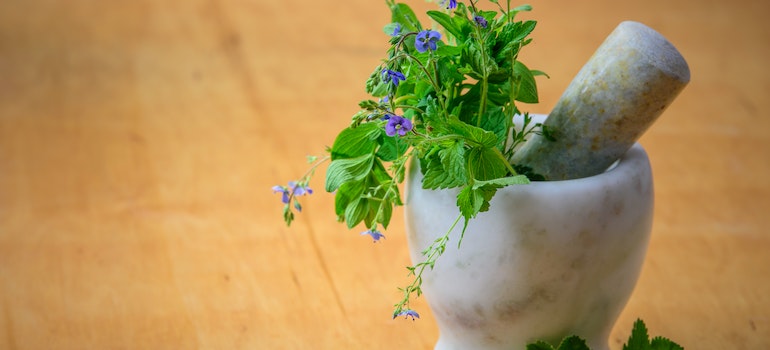History of Addiction Treatment & Drug Rehab
As we’ve said many times in our blogs – addiction is a burning issue as of today. Now, as a group of mental health professionals, we at drug rehab Lake Ariel PA center have to go down the collective memory lane and uncover the time and place where it all began. Once we start digging up our roots, it turns out that addictions weren’t a product of the ‘sex, drugs, and rock’n’roll’ mentality. The history of addiction treatment & drug rehab is a tale as old as time. How did everything happen? What can we learn from it? Let us take you to the beginning.
Jump to Section
Addictions weren’t invented today
Substance abuse and its treatment are as old as civilization itself. Alcohol, opium, and other narcotics were all employed for their addictive effects in ancient times. One of the fathers of addiction treatment was the ancient Egyptian deity Thoth. He was revered as a healer and physician, and his worship inspired one of the oldest models for treating addiction. The Egyptians believed in the healing power of prayer and ritual. They also utilized numerous herbal cures to treat addiction.
Ancient Greeks, Romans, and Chinese also had their methods
Opium’s analgesic and euphoric properties made it a popular medicine in ancient Greece. However, the substance also caused widespread addiction. The Greek physician Galen, who lived in the second century CE, penned substantial writings on the subject of addiction and its treatment. Interestingly, he included the use of:
- exercise
- nutrition
- therapeutic baths
Thousands of years later, we can agree with his methods. On the other hand, bloodletting, fasting, and the use of different plants and medications were all common treatments for addiction among the ancient Romans.
Traditional Chinese medicine has a long history of employing natural medicines to treat a wide variety of health concerns, including addiction. The ancient Chinese understood the value of family and community support for people with addiction. Additionally, they employed acupuncture, meditation, and herbal medicines to cure it.

Nature and spirit vs. pharmacology and psychotherapy
Natural medicines and spiritual practices were the backbones of traditional addiction therapy. Compared to contemporary methods, these therapies may appear rudimentary. Yet, they were crucial in developing our present knowledge of addiction and its management. Our ancestors used herbs and prayers so we can use medicine and therapy sessions.
The Dark Ages of addiction therapy
Throughout the medieval ages, people typically blamed their own moral flaws, demonic possession, or God’s retribution for their addictions. Addiction was not widely recognized as a medical problem. Therefore, there were very few treatment options available. According to our experts at alcohol rehab centers in Pennsylvania, throughout the medieval ages, alcoholism was a widespread problem that was often stigmatized as a kind of sinful excess. Prayer, fasting, penance, bloodletting, and other medical procedures thought to purge the body were all considered possibilities for alcoholics.
Addiction to opium was also a problem throughout the middle ages, especially in the Asian and Middle Eastern regions. While opium was utilized therapeutically, its addictive qualities were well-documented. People used alternative medications like cannabis or henbane (as well as some primitive forms of behavioral therapy) to cure addictions.
Lack of knowledge and understanding
There was a lack of awareness and understanding of other types of addiction throughout the middle ages. Particularly those to gambling or sexual activity. According to the beliefs of that time, moral or religious instruction and discipline were the only things that could cure those addictions.
The lack of knowledge about addiction in the middle ages meant that the only available therapies were moral and religious instruction and a few medical procedures based on the restricted knowledge of the period. Luckily, humanity learned a lot from the Dark Ages of addiction treatment. Addiction is now widely recognized as a disease that may be treated using a variety of behavioral treatments, pharmaceuticals, and social networks.

18th and 19th ceturies
Addictions were first seen as medical disorders in the 18th and 19th centuries, expanding treatment possibilities beyond moral and religious instruction. Even though alcoholism was widespread, the temperance movement evolved as a political and social movement to discourage drinking. Behavioral treatments like the “water cure” and hypnosis were available with the use of opium and other medications. The idea behind them was to control withdrawal symptoms in alcoholics.
Despite the development of morphine as a cure for opium addiction in the early 19th century, opium addiction remained a significant problem in both Asia and Europe. Ironically, heroin was introduced in the late 19th century as a supposedly non-addictive replacement for morphine.
20th century – the era of new technology and methodology
Major advances in the study and treatment of addiction were made in the twentieth century. New medications, new technology, and changing societal views have all had an impact on how addiction is seen and treated today. However, this is probably due to the fact that new and severe addictions developed rapidly in this era. Therefore, society was forced to find a solution to a big problem.
Criminalization of substance abuse
Addiction to drugs like morphine and heroin became a major issue in the United States in the early 20th century. This led to the development of heroin rehab Pennsylvania facilities. Without a prescription, possession or distribution of drugs became criminal by the Harrison Narcotics Tax Act of 1914, and attempts to prevent drug addiction concentrated on law enforcement rather than therapy.

Shaping of medical addiction treatment options
The medical paradigm of addiction therapy developed in the middle of the twentieth century, when the idea of addiction as a disease gained traction. According to this theory, addiction is a progressive illness that requires continuous care. People first used methadone to treat heroin addiction in the 1960s, and still widely prescribe it today.
The contemporary addiction treatment system began to take shape in the 1970s, with the introduction of inpatient and outpatient programs and the formation of accreditation and licensing requirements. The self-help movement profoundly influenced addiction therapy in the 20th century. Among them, Alcoholics Anonymous were the most prominent.
New addictive substances like cocaine and methamphetamine emerged in the second half of the 20th century. Also, the prevalence of behavioral addictions like compulsive gambling and internet usage became significant. Several other sorts of behavioral therapy, and in some cases medicines, were available to treat these novel addictions.
The opioid crisis shaped the world of rehabilitation we know today
In the 90s, there was a major proliferation of opioid abuse. The lack of regulations in prescribing and taking opioids led to a major epidemic that lasts up to this day. A prescription drug addiction rehab became a necessity in American society, and it is just as important today.

The first rehab in the history of addiction treatment & drug rehab
In 1858, the New York State Inebriate Asylum opened in Binghamton. It was the country’s first recognized hospital dedicated to the treatment of alcoholism. Alcoholism was seen as a moral defect rather than a medical disease at the time the institution was founded, thus it was treated as such. The “moral therapy” paradigm, which was the New York State Inebriate Asylum’s signature method, prioritized a regimented setting, strict enforcement of rules, and the pairing of work and play as means to restore sobriety. Patients were subject to a regimented schedule that included employment, schooling and skill development, and physical activity.
The facility was revolutionary for its time, inspiring similar facilities to spring up in the late 19th and early 20th centuries. Also, two such facilities were the Charles B. Towns Hospital for Drug and Alcohol Addictions, established in 1901, and the Keeley Institute, established in 1879. Both provided unique therapies for alcoholism.
From the first to the first hundred
Outpatient and residential treatment programs, as well as certification and licensing criteria, emerged throughout the 20th century, creating a more complete framework for treating addiction. The United States now has hundreds of addiction treatment centers that use a wide variety of methods to help people overcome their substance abuse problems. But, we’ll always be thankful for the first rehabilitation centers that pawed the way for all of us.
The 1960s and 1970s – new dark ages for humans, prosperous for science
Substance abuse and its treatment went through radical shifts in the 1960s and 1970s, influenced by social, cultural, and political movements. Addiction to drugs, especially heroin, rose to prominence as a public health problem around this period. There was significant exposure of soldiers to heroin while they were serving abroad. This led to an upsurge in drug usage during and after the Vietnam War.
Methadone found its way into therapy
Medication-assisted treatment with methadone and behavioral treatments like group therapy and psychotherapy was available for those with drug addiction in the 1960s and 1970s. At this time period, residential treatment facilities like therapeutic communities began to appear.
The present system for treating substance abuse disorders took shape in the 1970s. There was a great introduction to accreditation and licensing requirements. Inpatient and outpatient facilities launched at this time as well. According to our experts at the drug rehab center in Pennsylvania, during this time period, addiction therapy was also significantly influenced by the emergence of the self-help movement, most notably via Alcoholics Anonymous.

Different currents in society
Yet, the counterculture and youth movements of the era also contributed to a change in attitudes regarding drug usage in the 1960s and 1970s. Several people saw their drug usage as a protest against conventional beliefs. Others, on the other hand, saw it as a way to learn about themselves and develop as individuals. The hippie movement made the existence of marijuana rehab centers essential. Yet, it was also a stepping stone in its development. During this time period, there was also criticism against the medical approach of addiction therapy. Some claimed that dependency on drugs was not a sickness but rather a reflection of underlying economic, racial, and political problems.
Growth of the rehab industry
During the last several decades, with more people needing addiction treatment and the medicalization of addiction, the rehabilitation business has flourished. The growing rates of alcohol and drug misuse, as well as other substance use disorders, are contributing factors in the expansion of the rehabilitation sector. There has been a dramatic increase in the need for substance abuse rehabilitation services, necessitating the development of new institutions as well as the extension of existing ones.
Governments realized the importance of rehabilitation centers
Boosts in public and private financing for addiction treatment programs are also contributing to the expansion of the rehabilitation sector. Government agencies and insurance companies expanded funding for treatment programs in response to the growing need for effective addiction treatment. In such an environment, Benzo rehab options began to flourish as well. Also, improvements in understanding and treating addiction have contributed to the expansion of the rehabilitation sector. It is now possible to treat addiction more effectively and with less chance of relapse because of new drugs, treatments, and interventions.
Less stigma – more ability to help
The stigma that formerly surrounded substance abuse and mental health disorders has gradually faded. This helped to fuel the expansion of the rehabilitation sector. The need for rehab services has grown as more individuals have been willing to seek assistance for their addiction and mental health issues. Outpatient cocaine rehab, as well as some inpatient programs, detoxification assistance, mental health care, and continuing care services, are just some of the new additions to the rehabilitation sector. Also, the use of telehealth services is one example of how the healthcare business has embraced innovation to better meet patients’ needs.

We should all learn from the history of addiction treatment & drug rehab
There is a reason people call history ‘a mother of life’. We can learn a lot from it. We can improve and grow. That’s why it’s important to know the history of addiction treatment & drug rehab – we don’t want to repeat past mistakes. The goal is to move forward and follow a little creek of hope to a better future. To write a new, better history for future generations.
References:
https://www.cambridge.org/core/books/egyptian-mummies-and-modern-science/intoxicants-in-ancient-egypt-opium-nymphea-coca-and-tobacco/9959E7B4AE9ED1C3FDB7D92D50E19109
https://www.ncbi.nlm.nih.gov/pmc/articles/PMC3202501/#:~:text=In%20Roman%20law%20and%20in,enslaved%20because%20of%20unpaid%20debts.
https://www.nature.com/articles/132130a0
https://www.cdc.gov/opioids/basics/epidemic.html